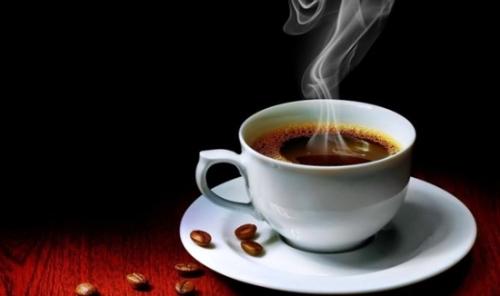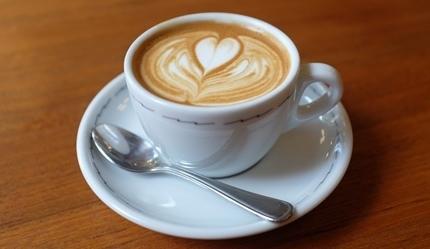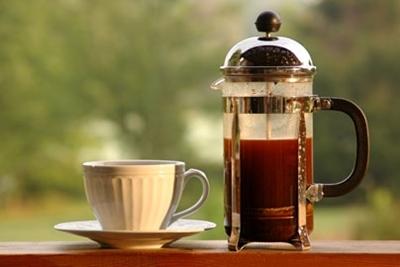
In Search of the Perfect Cup
Get acquainted with some more popular types of coffee and find out what kind of utensils you need for brewing them.
When browsing Bob Shop, you will find a variety of utensils for making coffee. Some are straightforward, others can be baffling. Let’s take a closer look at some of the more popular types of coffee and the utensils you need to make them.
Instant coffee
This one is simplicity itself. All you need is a kettle. Just heat some fresh water (never make your instant by reheating the water that’s been sitting in a kettle). Before the water starts boiling, pour it over about one heaped teaspoon of instant coffee you had placed in a mug. Add some sugar and milk – and drink instantly! Even if you like black coffee, you will probably find that most instant blends are unpalatable without the addition of milk and sugar.
Of course, true coffee lovers will turn up their noses at this concoction. They do have a point. Instant mix is merely an extract of pre-made coffee, dehydrated by either freezing or spraying the brew in special machines. Freeze-drying gives a granulated mix, while the result of spray-drying is a fine powder. The former produces a truer coffee flavour, but no instant coffee measures up to “real” coffee. Still, it’s instant, so if you are pressed for time, or if you have run out of the real thing...
Some say that this type of coffee can be improved if you stir the granules, sugar and a little cold water in until a paste is made, and only then add hot water.
Frappé coffee
Instant coffee made with cold water was an immediate hit when it was invented (accidentally) in 1957 by Dimitris Vakondios in Greece. It is still enjoyed in many parts of the world.
To make a frappé, you need a frother and a tall glass. Put a heaped teaspoon or two of spray-dried, finely powdered (and usually cheaper) instant coffee into the glass, add sugar (if desired) and a little bit of cold water. Blend with the frother to form thick foam.
Add more cold water, put in a few ice cubes and a straw (otherwise you won’t be able to get to the drink past all that froth)... and you have a refreshing summer drink that tastes fine even without milk (or sugar, for that matter).
In absence of a frother, you may put everything, including the ice cubes, into a cocktail shaker and shake vigorously to create the froth. Then transfer to a tall glass and add the straw. If you must have milk, add powdered milk before the frothing stage.
Espresso
Just like the instant mix, espresso is fast coffee, but the final product is worlds apart. Espresso has been described (and deservedly so) as a miracle of flavour: bold, aromatic and velvety. It also looks good with that smooth, rich crema (foam).
To enjoy a proper espresso, you need an espresso making machine. These do not come cheap, but just think of how much you’ll save by making your own cup instead of going to the nearest cafe!
Your shiny new machine will probably confront you with strange settings such as espresso, doppio, ristretto, lungo and more. Take time to experiment, and if push comes to shove, you can always consult the manual!
Having a machine make your coffee does not mean there’s no fine art to it. On the contrary. You need to have coffee ground especially for espresso. You need to compact the right amount of it into the filter basket. You need to use small, preferably pre-heated, thick-walled cups. And you need to stir the coffee after the machine made it for you, even if you do not add sugar; because mixing the foam with the liquid below balances the flavour.
The compacting step becomes obsolete if you opt for the capsule coffee machine. These are cheaper than the standard models; however, plastic or aluminium capsules are rather pricy.

Cappuccino
Espresso is the base for many coffee varieties. The most popular of them is cappuccino.
To enjoy cappuccino at home, you’ll need an espresso machine with a built-in steaming wand.
Fill about one third of a metal steaming pitcher with cold milk (for velvety smoothness, use whole milk) and steam it until it heats to about 60 degrees Celsius, doubles in size, foams to small bubbles and presents a shiny, silky, even surface.
Gently tap the pitcher against the counter and swirl it, let it stand for a little while, swirl again... and only then pour the foam over your prepared cup of espresso.
If your espresso machine does not have a steaming wand, a frother might (just) do the job.
Moka coffee
Craving espresso but don’t have money to buy a machine? Get a moka pot! The beverage obtained from a moka pot is bold and aromatic. It lacks the rich creamy foam of espresso, but the two are similar enough to justify moka’s alternative name: stove-top espresso.
A moka pot has two chambers. Just like an espresso machine, it uses (a much lower) steam pressure to push water through ground coffee to produce the beverage.
To make moka coffee, disassemble the pot and fill the filter compartment completely with evenly spread, but not compacted medium ground coffee. Then fill the base chamber with cold water up to the level of the valve, insert the filter filled with coffee, screw the two chambers tightly together and place the moka pot on a stove on low to medium heat.
You can keep the lid open or close it; when it is open, it is easier to see when the beverage is done. And it is done when about two thirds of the water that you poured in the lower chamber has made its way into the upper chamber. Remove the pot from heat just when the coffee starts to gurgle, before it starts to rise and bubble. Mix the coffee in the moka pot with a spoon and pour into cups.
French press
Some say that France is not so much known for its coffee as it is for its coffee culture (which involves sitting for hours in a cafe and watching the world go by). Still, France has indebted us with an important coffee making invention: the French press, a cylindrical vessel with a fitted metal strainer.
Or not...
The first coffee press may or may not have been made in France, but it was an Italian who patented it (Attilio Caliman, in 1929). Today, French press is known by various names: cafeteria, press pot, coffee press, and coffee plunger are some of them.
To make coffee in a French press (or plunger) put medium to slightly coarse ground coffee into the beaker. Very coarse grinds may clog the filter, while very fine grinds will pass through it, muddying the results.
The ratio of water and coffee is important. A heaped teaspoon per 200 millilitres of water is recommended, but a different ratio may work better for you. Slowly pour hot (not boiling) water over the ground coffee. After a minute or so, stir the top with a tablespoon to help coffee particles that might be floating drop to the bottom. Put on the lid. Wait for at least four minutes and then slowly press the plunger downwards. Stop before you reach the bottom to avoid agitating the coffee sediment. Slowly pour the coffee into cups, without draining the pot right down to the bottom, and enjoy the earthy, rich flavour of this brew.
Remember to transfer the coffee out of the press as soon as the brewing process in finalised. If the coffee is left in the pot, the beans will continue brewing and the result will be a bitter tasting beverage.

Filter coffee
Some ground coffee particles may end up in your cup when you use French press, but none will escape through the tight mesh of a paper filter. That also means that some of the coffee oils will be trapped. The resulting brew is a subtle, light-bodied coffee, which might be just what you like!
No one knows who, when and where started straining straining coffee. We do know that one German housewife, Melitta Bentz, grew so tired of washing linen bag coffee strainers that she invented paper filters in 1908 (Frau Bentz went on to establish a paper coffee filter manufacturing business that’s still operational today).
Filtered or drip-brewed coffee is produced by having hot water pass slowly over ground coffee beans contained in a disposable paper filter or a reusable metal filter. Acting solely under gravity, water seeps through the ground coffee, absorbing its flavours, and drips into a collecting vessel.
There are many filter coffee machines available. They are also known as drip coffee machines. Simpler varieties are usually called filter coffee makers. But did you know that the manual pour-over method produces quite decent results? For this, it is best to use an hour-shaped pour-over coffee maker. Simply fit in a paper filter and put ground coffee into it, making sure that the surface is level. Then slowly pour hot (not boiling) water in a circular motion, along the edges of the paper filter.
Whether you use a coffee making machine or make your filter coffee manually, coffee grind is critical. Choose medium grind and use a decent amount of it: one heaped teaspoon per 100 to 150 millilitres of water. Store the brew in a thermos or a thermal flask and enjoy within a few hours of preparation.
Good quality coffee is crucial for making the perfect cup of coffee, but the right tools play a big part too. We have explored only some of the countless pieces of equipment to get the job done. Keen coffee lovers, for example, will insist on grinding the beans with a coffee grinder (preferably manual) just before making the brew. Give it a try when you next invite friends for a chat over coffee. You won’t regret it!